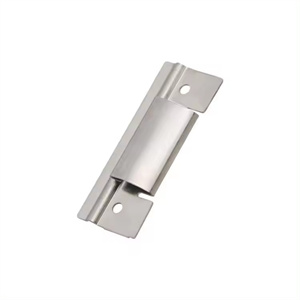Precision Stamping Parts are widely and crucially applied in communication equipment, meeting the requirements of miniaturization, integration, and high performance for communication equipment with their high precision, high reliability, and diverse designs. The following is a clear summary and dotted representation of the application of Precision Stamping Parts in communication equipment:
1、 Miniaturization and integration
Component size reduction:
Precision stamping technology can manufacture extremely small components, such as connectors, contacts, heat sinks, etc. The application of these components in communication equipment can help reduce the overall size of the equipment, achieve portability and miniaturization.
High density integration:
Through precision stamping technology, more components can be integrated within a limited space, improving the integration of equipment. This is particularly important for communication devices, as improved integration means more functions and better performance can be achieved in a smaller volume.
2、 High precision and high quality
Dimensional accuracy:
Precision stamping technology can ensure that the dimensional accuracy of components reaches the micrometer level or even higher, which is crucial for components that require precise matching and connection in communication equipment. High precision components can reduce assembly errors and improve the overall performance of equipment.
Surface quality:
Precision stamped parts typically have a smooth, burr free surface, which helps reduce issues such as poor electrical contact and signal attenuation. In communication equipment, good surface quality is of great significance in ensuring the stability of electrical connections and the reliability of signal transmission.
3、 Diversified design
Complex shapes:
Precision stamping technology can manufacture various complex shaped components to meet the diverse shape requirements of communication equipment. These complex shaped components may have special electrical or mechanical properties, providing more possibilities for the design of communication equipment.
Customized production:
Precision stamping parts can be customized for production according to the specific needs of customers. Communication equipment manufacturers can customize stamping parts that meet the special requirements and designs of the equipment to achieve optimal performance and cost-effectiveness.
4、 Specific application examples
Connector:
Precision stamping parts are widely used in the manufacturing of various connectors in communication equipment. These connectors require high-precision and high-quality coordination to ensure the stability and reliability of electrical connections. Precision stamping technology can manufacture connectors that meet these requirements, meeting the needs of communication equipment for high-speed data and signal transmission.
Heat sink:
In communication equipment, heat dissipation is an important issue. Precision stamping technology can manufacture heat sinks with efficient heat dissipation performance. By increasing the heat dissipation area and optimizing the heat dissipation structure, the heat dissipation efficiency of the equipment can be improved, ensuring the stability and reliability of the equipment during long-term operation.
Shield:
In order to reduce the impact of electromagnetic interference on communication equipment, it is necessary to use shielding covers to isolate electromagnetic radiation. Precision stamping technology can manufacture shielding covers with high precision and good shielding performance, ensuring the normal operation of communication equipment in complex electromagnetic environments.
The application of Precision Stamping Parts in communication equipment reflects its advantages of high precision, high reliability, and diversity. The components manufactured through precision stamping technology not only help achieve miniaturization and integration of communication equipment, but also improve the overall performance and reliability of the equipment.
